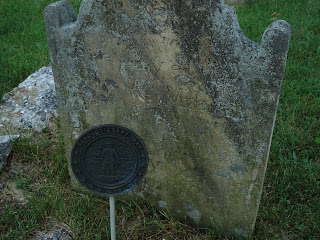
One day, I will add an entry or two about Cedar Grove Cemetery in Chambersburg which has some old gravestones, a few of which deserve their own entries. Like this one.
The most interesting grave marker I happened across in Cedar Gove is that of Burt Jacob Asper, a lieutenant and a surgeon, in the United States Naval Medical Corps in 1918 when he died, lost at sea as a crew member on the U.S.S. Cyclops. The Cyclops was a Proteus-class collier (basically a large (542' long) ship which carried coal used to re-supply coal burning ships) launched in 1910. Upon the United States' entry into World War One, the Cyclops saw service in the Atlantic, spending most of her time along the east coast of the U.S.
In early 1918, the Cyclops was sent to Brazil to pick up manganese ore and return it to Baltimore for use in munitions manufacturing. There are conflicting reports concerning whether she was overloaded and an unscheduled stop the Cyclops made in Barbados seems to support that she was having some trouble with the load she carried. Whatever the case, sometime between March 4 and March 13, the day she was due in Baltimore, the Cyclops disappeared. No wreckage was ever located and no trace of the 309 crewmen was ever found. It remains the largest, non-combat-related loss of life in U.S. Navy history.
What does this add up to: Barbados, disappearing into thin air with all hands on deck, no trace of wreckage?? The Bermuda Triangle, of course! Virtually every book written on the Bermuda Triangle includes a chapter on the Cyclops and its photo has become familiar to anyone even remotely familiar with the lore of the Triangle.
Even though, Lt. Asper's final resting place is somewhere in the Atlantic Ocean with his shipmates, he's remembered in Chambersburg, Pennsylvania, with a grave marker he shares with his parents.







